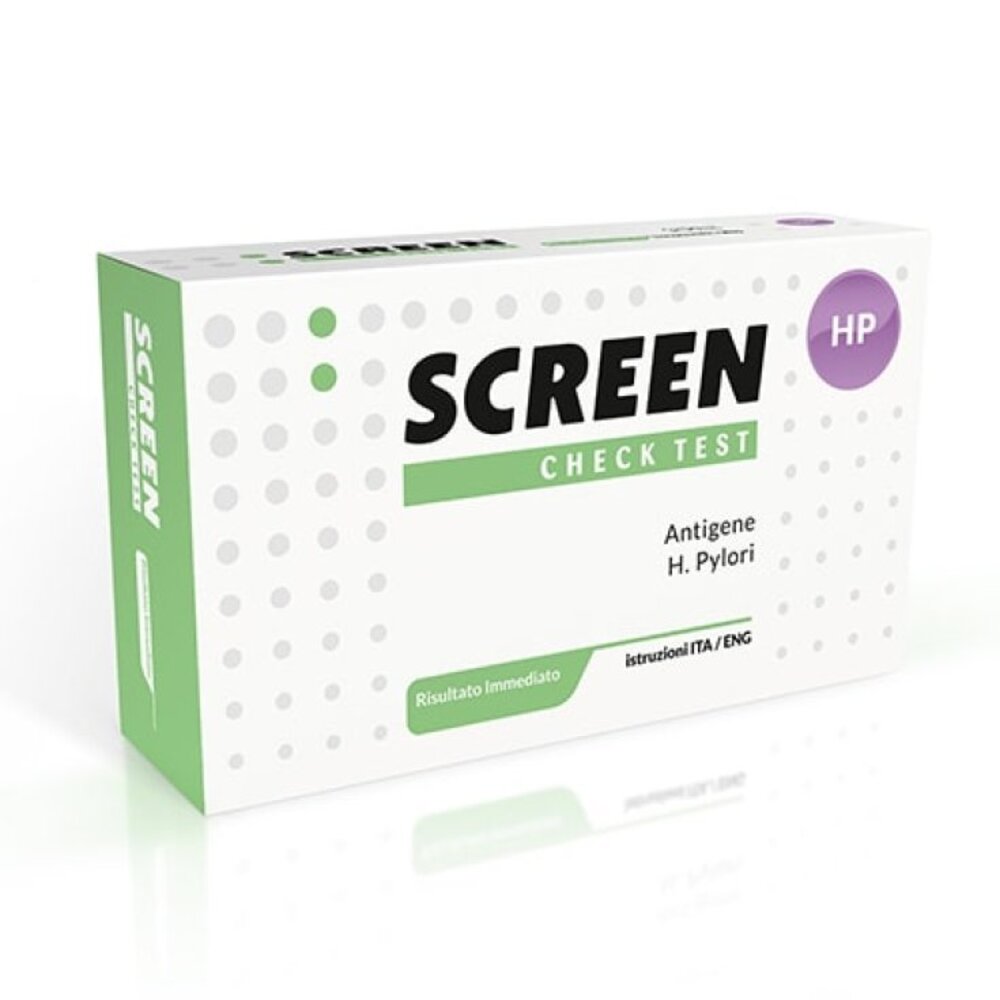Helicobacter pylori self-test (antigen) - 1 kit
Helicobacter pylori self-test (antigen) - 1 kit
Couldn't load pickup availability
The Helicobacter pylori Antigen Self-Test detects the presence of Helicobacter pylori antigens in stool. It is a test designed to detect the presence of the bacteria in the gastroduodenal tract.
In vitro diagnostic medical device CE 0123.
For in vitro self-test use only.
Recommended use:
Precautions
1. For in vitro self-test use only.
2. Do not eat, drink, or smoke in the sample or kit handling area.
3. Store in a dry place between 2-30°C (36-86°F), avoiding areas with excessive humidity. If the sealed pouch is damaged or opened, do not use the test.
4. Use a clean container to collect the stool sample.
5. Pay close attention to the indicated times.
6. Use the test only once.
7. Do not disassemble or touch the media test window.
8. The kit should not be frozen or used after the expiration date printed on the packaging.
9. After use, all components must be disposed of together with normal household waste.
10. Keep out of reach of children.
How to use
1. Wash your hands with soap and rinse with clean water.
2. To collect stool samples: The stool sample should be collected on the stool collection sheet or in a clean container. Use the stool collection sheet to avoid contaminating the sample. Take care not to let the sample or the side of the paper containing the sample come into contact with other contaminants, including bathroom products.
3. To analyze stool samples: Unscrew the cap of the sample collection tube and randomly apply the collected sample with the applicator to the stool sample in at least 3 different locations. Do not shake the stool sample. Retighten and secure the cap on the collection tube, then shake the sample collection tube vigorously to mix the sample and extraction buffer.
4. Allow the package to reach room temperature before opening. Remove the test device from the sealed package and use it as soon as possible. Best results are obtained if the test is performed immediately after opening the package.
5. Open the cap of the sample collection tube and break off the tip. Invert the tube and dispense 2 full drops of the extracted sample into the sample well (S) of the test device, then start the timer. Avoid trapping air bubbles in the sample well (S).
6. Read the results after 10 minutes. Do not read the results after 20 minutes.
Interpretation of results
POSITIVE: Two lines appear. Both the T (Test) and C (Control) lines appear. This result indicates the presence of H. pylori antigen in the stool, and you should consult a doctor.
NEGATIVE: A colored line appears in the control area (C). No line appears in the test area (T). This result indicates that the presence of H. pylori antigen could not be detected in the stool.
NULL: The control line does not appear. The most likely reasons for control line failure are insufficient sample volume or incorrect procedural techniques. Review the procedure and repeat the test with a new kit. If the problem persists, discontinue use of the kit immediately and contact your local distributor.
*The color intensity in the test region (T) varies depending on the concentration of H. pylori antigen present in the sample. Therefore, any color gradation of the test line (T) is considered positive.
Limitations
1. The H. pylori antigen test (stool) is intended for in vitro diagnostic purposes only. The test should only be used to detect H. pylori antigen in stool samples. This qualitative test does not allow for the determination of either the quantitative value or the growth rate of H. pylori antigen concentration.
2. The H. pylori antigen test (stool) will only indicate the presence of H. pylori in the sample and should not be used as the sole criterion for establishing that H. pylori is the causative agent of peptic or duodenal ulcers.
3. As with all diagnostic tests, all results should be interpreted in conjunction with other clinical information available to the physician.
4. If the test result is negative and clinical symptoms persist, additional testing using other clinical methods is recommended. A negative result in no way rules out the possibility of H. pylori infection.
5. After some antibiotic treatments, the concentration of H. pylori antigen may fall below the minimum detection level of the test. Therefore, diagnosis during antibiotic treatment should be made with caution.
Storage
The kit can be stored at room temperature or refrigerated (2-30°C).
The test is stable until the expiration date printed on the sealed package.
The test must remain in the sealed packaging until use.
DO NOT FREEZE. Do not use beyond the expiration date.
Ingredients:
Contains 1 collection kit.
Share


